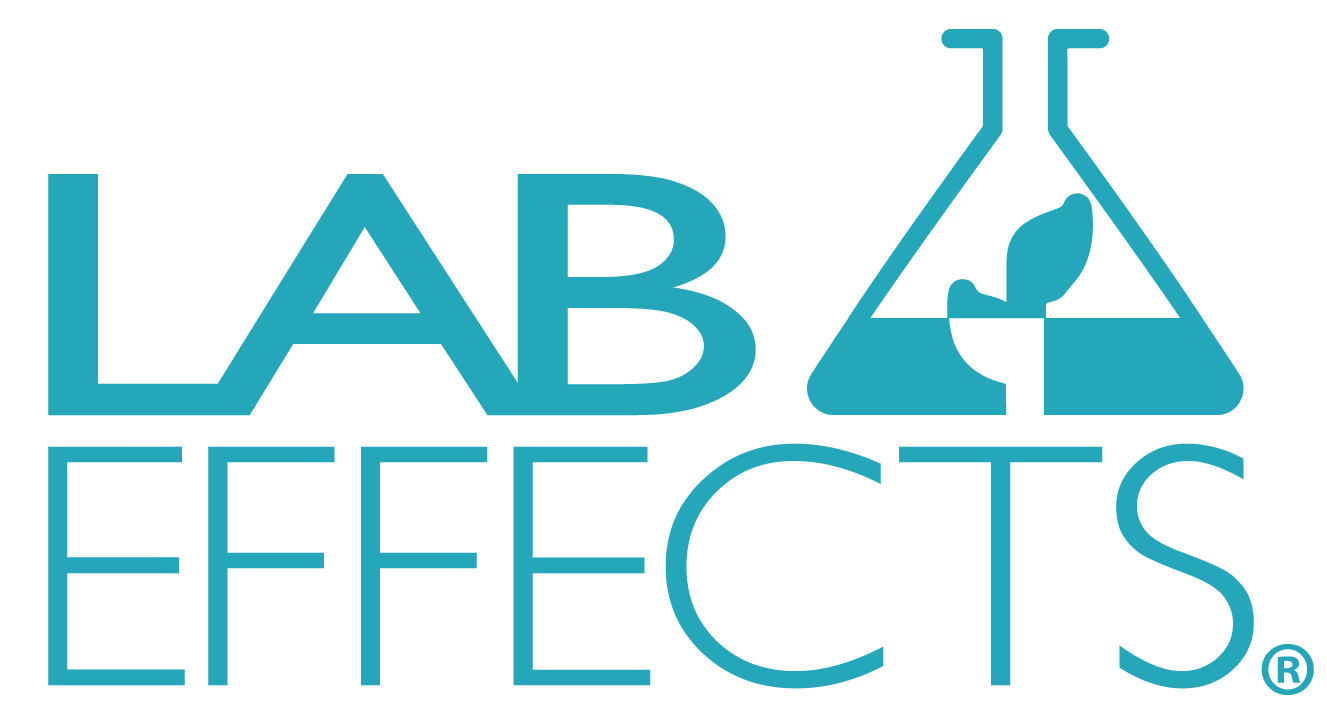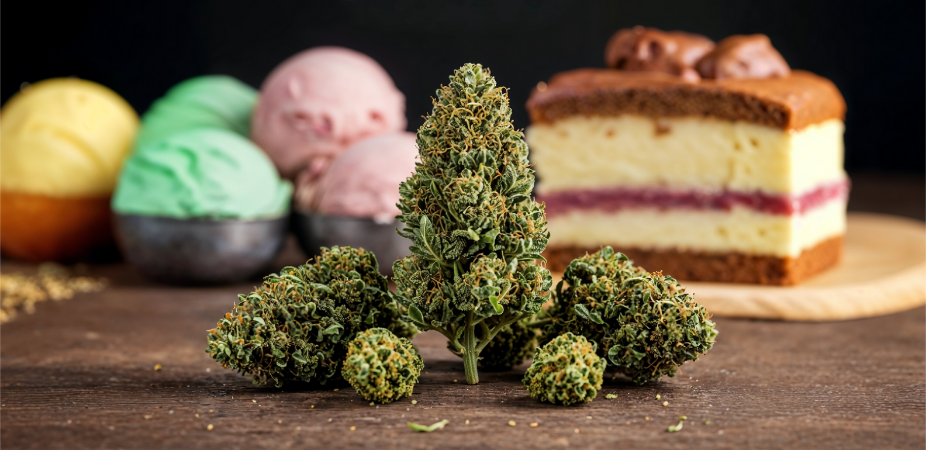Most people would agree that laughter is a positive experience. We laugh when we’re happy, when something strikes us as funny, when we’re in a good mood—or when we get our hands on a cannabis product. There are many types of laughter, from snorts and giggles to big old belly laughs. Laughter can be infectious, too. The company you’re in and their mood can affect the entire group. One person “gets the giggles,” and suddenly, everyone in the room is snickering. Every time the laughter starts to die down, someone sets it off again until the whole room is roaring.The question is, are there terpenes that make you laugh? According to science, the answer is… “kind of”. Terpenes themselves aren’t chemically proven to induce laughter, but quite a few people report feeling giggly after exposure to terpenes. The most likely explanation for the seeming connection between terpenes and laughter is a correlative, not a causative, one. Let’s look at why people may think terpenes make you laugh and what might be going on from a scientific perspective.
Why Does Weed Make You Laugh?
Cannabis contains hundreds of chemical compounds, many of which affect mood. The plant’s effects are connected to two main chemical compounds: cannabinoids and terpenes. Together, these compounds produce what is known as the entourage effect, (1) as terpenes are thought to boost the therapeutic effects of cannabinoids like CBD and THC, among others.Not everyone starts giggling after a puff from a joint or pull from a vape, but many people do. Could it be that the terpenes that help you relax and ease your anxiety can make you feel like laughing simply because your stress is diminished? Cannabis is a highly individual experience (no pun intended), and your tolerance, environment, and the strain can all impact how terpenes make you feel.A few theories about why cannabis makes you laugh include:
Dopamine Production
THC, the primary psychoactive cannabinoid found in cannabis plants, can increase mesolimbic dopamine transmission. (2) This boost in dopamine production can make you feel euphoric and happy, leading to spontaneous and robust laughter sessions.This type of fatuous laughter has been connected to cannabis use for millennia. Indeed, in the 1st century, Pliny the Elder named cannabis Gelotophyllis, which translates to “leaves of laughter.”As he described in his work “Plinii Naturalis Historia” (The Natural History), “If [Gelotophyllis] be taken in myrrh and wine all kinds of phantoms beset the mind, causing laughter which persists until the kernels of pine-nuts are taken with pepper and honey in palm wine. (3)
Stress-Relieving Effects
Some terpenes enhance the effect of cannabinoids, synergizing feelings of relaxation, anxiety reduction, and stress relief. (4) The shedding of psychological weight off your shoulders could also make you feel like smiling and laughing. According to the National Institute of Health, “It has been repeatedly shown that CBD and THC decrease anxiety, the most common psychiatric disorder, in both animals and humans. “ The NIH article went on to note:
[A]mong popular recreational users, it is commonly believed that the Cannabis indica strains are rich in Myrcene, a terpene known to induce relaxation and decrease anxiety, while Cannabis sativa strains are mostly rich in limonene and other terpenes, shown to be related to alertness and arousing behavior. It is assumed that combining terpenes with cannabinoids enhances the mood-stabilizing effects attributed to the main two cannabinoids, THC and CBD.
Group Dynamics
Have you ever thought about how much more compelling and engaging watching a movie in a crowded theater is than watching one at home? Shared experiences are naturally richer and more intense. If you’re enjoying cannabis in the company of like-minded people, laughter can quickly become contagious. (5)According to an article about the phenomenon of contagious laughter written by Robert R. Provine and published in a Bulletin of the Psychonomic Society, “Contagious laughter, like contagious yawning, is an example of a social coupling process that synchronizes the biological and behavioral state of a group.” (6)
Does Sativa Make You Laugh?
“In the beginning,” as the saying goes, there were two distinct strains of cannabis: Cannabis sativa sativa and Cannabis sativa indica. However, years of cultivation and cross-breeding have eliminated the original “pure” strains and created many hybrids, none of which can be accurately referred to as sativa or indica. Only biochemical assays (7) can tell you exactly what is in a cannabis plant.That said, most hybrids are still referred to as a “sativa-dominant strain” or an “indica-dominant strain,” depending on their therapeutic effects. Indica-dominant strains are commercially associated with sedative effects and pain relief. Sativa-dominant strains are associated with euphoria, mood-boosting, and fits of laughter. That’s not to say that strains marketed as indica-dominant won’t prompt laughter. A lot depends on the terpene mix. For example, many cannabis strains classified as indica dominant contain high levels of myrcene, which is well known to cause “couch-lock.” (8) Either indica-dominant or sativa-dominant cannabis strains can help create a euphoric, mood-lifting state, depending on what terpenes are present and how they work with the cannabinoids. Myrcene-rich strains can still encourage laughter, even if you’re slowly glazing over and sinking further into the couch.
What Terpenes Make You Laugh?
Disclaimer: Terpenes are non-polar, oil-based hydrocarbons that, in pure form, can be very potent and sometimes volatile, flammable, and even corrosive compounds. For this reason, they should strictly be used by experienced and trained manufacturers, and we advise those unfamiliar with these compounds to exercise caution.Hundreds of terpenes exist. In combination with cannabinoids, there are an almost infinite number of possibilities contained in each strain's phytochemical profile. Cannabis growers are constantly refining their breeding processes not only to increase or decrease levels of different cannabinoids but also to tweak the terpenes profile. What's more, for finished cannabis products like vapes and infused pre-rolls, manufacturers regularly add additional terpenes into the mix to achieve the desired aromatic and therapeutic effects. As we mentioned above, certain terpenes can modulate cannabinoid formulations to enhance the experience you're getting. However, even a “designer” weed strain isn’t guaranteed to have the same effect on everyone because a grower can’t control each person’s unique physiology.Everyone reacts differently to terpenes and, by extension, to cannabis strains. You could be smoking the same strain from the same lab-tested batch as the person beside you, and you can each have a completely different experience. Laughing as a result of using a terpene product is a personal experience, and not everyone will have the same outcome.So, does this mean you should just forget about terpenes and a gut-busting good time? Not at all. While terpenes will not hit you like a particular drug, they can help amplify or modulate the effects of something you already feel. If the cannabis strain makes you feel relaxed and happy, the terpenes might just supply that extra little mood boost to have you snickering uncontrollably.All this is to say that cannabis products containing natural or added amounts of certain terpenes may generate laughter in some people. Again, this is an individual experience and differs from person to person. You’ll have to use trial and error to determine which cannabis strains have the right combination of cannabinoids and terpenes to give you the cheerful high you’re chasing. In most cases, this will mean browsing and trying out what is marketed as sativa-dominant hybrid strains. Still, we would be remiss to say that you’d never get these effects with an indica-dominant strain. After all, it’s possible to feel both relaxed and giggly at the same time.But if you are on the hunt specifically for “terpenes that make you laugh,” you could start with the following suggestions:
Limonene
Limonene has a citrus aroma and a minty-lime flavor. It’s found in oranges, bergamot, conifers, and cannabis strains like Quantum Kush, Kosher Kush, and Pineapple Express. Limonene is thought to extend benefits in mood (9) in some people, which can readily lead to laughter.
Myrcene
Myrcene has an earthy scent with notes of sweetness and a tangy, mango-like flavor. This isn’t surprising since it’s found in mangos and hops and abundant in strains like Girl Scout Cookies, Grape Ape, and Northern Lights. Myrcene is a terpene known to help users relax and reduce anxiety, (10) which can end up in a drowsy giggle-fest.
Pinene
Pinene has a woodsy scent and tastes almost like rosemary. It’s found in conifers and sagebrush, plus cannabis strains like Haze Berry and Blue Dream. Pinene has an anxiety-reducing therapeutic effect, (11) which can mean a relaxed and euphoric state conducive to laughter.
Linalool
Linalool has a floral scent with hints of bergamot and a citrus flavor with a tropical accent. It's found in plants like jasmine and basil, as well as Ghost Train Haze and Berry Haze cannabis strains. Linalool is known to help with depression and anxiety (12) and can lift your mood, making you feel like smiling and laughing.
Humulene
Humulene has a semi-bitter, earthy smell and a spicy, peppery flavor. It's found in coriander, cloves, ginseng, black pepper, and cannabis strains Amnesia Haze and Golden Haze. Humulene can relieve mental stress, (13) leading to carefree laughter.
Terpinolene
Terpinolene has a fresh, woodsy, floral aroma and an herbal, piney flavor with just a touch of pineapple sweetness. It's found in lilac, nutmeg, cumin, and apples, as well as cannabis strains like Diamond OG and Bubba Kush. Terpinolene’s therapeutic effects on anxiety (14) can lift your mood, leaving you ready for a good laugh.
Ocimene
Ocimene has an outdoorsy smell with citrus notes and flavors of citrus and pineapple. It's found in plants like mango, kumquat, lavender, and the cannabis strain Super Lemon Haze. Like lavender, ocimene is associated with relaxation and anxiety reduction, (15) which can leave you feeling like laughing in relief.
Caryophyllene
Caryophyllene has a sharp, spicy flavor and peppery smell and is found in black pepper, cloves, cinnamon, and the cannabis strains Deadhead OG and Sour Diesel. It’s highly sought after for stress relief, relaxing users and making them feel like laughing.
Beta-caryophyllene
Beta-caryophyllene has a woodsy, spicy smell and warm, peppery taste. It's found in basil, cinnamon, rosemary, oregano, and cannabis strains such as Super Silver Haze and Blue Diesel. Both caryophyllene and beta-caryophyllene modulate the body's stress response, (16) and the resulting relief can make you feel like laughing as your cares melt away.
Lab Effects: The #1 Source of Natural Botanical and Cannabis Terpenes
When it comes to laughter, terpenes may not directly cause your fit of the giggles, but they can certainly create the ideal mood for some solid snickering and maybe a guffaw or two.
- Searching for terpenes for making cannabis products? Lab Effects has 40+ true-to-flower cannabis-derived terpene strains on sale, a few of which we’ve covered in this blog. Try them out and see if they make you laugh!
- We only use 100% natural, plant-derived sources, and the terpenes don’t contain artificial additives or chemicals.
- Our terpenes are guaranteed to be pure and consistent, and you can customize terpene blends to your precise preferences.
Order cannabis terpenes wholesale today from a reputable company in the U.S. cannabis industry. Lab Effects is cGMP-certified, ISO 9001-certified, HACCP-certified, FDA-registered, and ANAB-accredited.
Sources
- https://www.ncbi.nlm.nih.gov/pmc/articles/PMC7324885/
- https://www.ncbi.nlm.nih.gov/pmc/articles/PMC3405830/
- https://www.loebclassics.com/view/pliny_elder-natural_history/1938/pb_LCL393.117.xml?readMode=recto
- https://www.ncbi.nlm.nih.gov/pmc/articles/PMC7763918/
- https://www.jneurosci.org/content/26/50/13067
- https://link.springer.com/content/pdf/10.3758/BF03330380.pdf
- https://www.ncbi.nlm.nih.gov/pmc/articles/PMC5576603/
- https://www.frontiersin.org/articles/10.3389/fnut.2021.699666/full
- https://www.ncbi.nlm.nih.gov/pmc/articles/PMC3165946/
- https://www.ncbi.nlm.nih.gov/pmc/articles/PMC6204402/
- https://www.ncbi.nlm.nih.gov/pmc/articles/PMC9957398/
- https://www.ncbi.nlm.nih.gov/pmc/articles/PMC9782902/
- https://www.ncbi.nlm.nih.gov/pmc/articles/PMC9782902/
- https://www.ncbi.nlm.nih.gov/pmc/articles/PMC9906924/
- https://www.ncbi.nlm.nih.gov/pmc/articles/PMC10404968/
- https://pubmed.ncbi.nlm.nih.gov/24835194/




